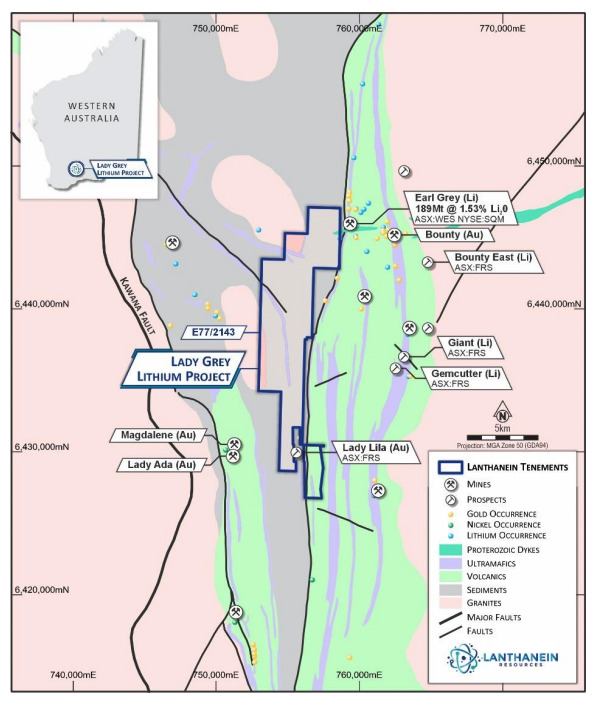Could You Call on Lady Grey?: Lanthanein Resources to define lithium drill targets adjacent to 189Mt Earl Grey Mine

Lanthanein Resources has completed an extensive soil sampling program at Lady Grey to better define geochemical anomalies. Pic: Getty Images
- Lanthanein’s soil sampling program will provide information on potential drill targets across the ~77km2 tenement package
- The company used the modern ultrafine soil sample analysis technique to generate higher quality information
- This information will assist with the interpretation of granite contact areas adjacent to the western and north-western boundary
Special Report: Lanthanein Resources has completed an extensive soil sampling program of 1900 samples at Lady Grey as it looks to define potential drill targets for future exploration campaigns.
After entering into a farm-in agreement to earn up to 70% of the Lady Grey lithium-tantalum project in December last year with Gondwana Resources, Lanthanein Resources (ASX:LNR) has been hard at it, conducting various exploration programs to prove up its lithium pegmatite potential.
The project covers 77km2 of prospective tenure in the Forrestania greenstone belt near Southern Cross in WA, one of the most desirable lithium hotspots in WA.
Lady Grey sits immediately adjacent to one of the largest operating lithium mines in the state, Covalent Lithium’s 189Mt at 1.53% Li2O Earl Grey mine – the centrepiece of the Mt Holland lithium project co-owned by Wesfarmers (ASX:WES) and Chile’s SQM.

Lady Grey Project relative to infrastructure of the Earl Grey lithium mine. Pic: Lanthanein Resources
Soil samples to better define geochemical anomalies
A recent soil sampling program at the site has wrapped up after collecting 1900 samples using LabWest’s ultrafine technique with low level detection technology to better define geochemical anomalies.
The technique delivers multielement analysis, mineralogy and several related parameters derived from the ultrafine fraction of soil samples.
Concentration of metals in the ultrafine fraction gives stronger signals, generally well above instrumental detection limits, and increased signal-to background ratios.
Several rock chip samples of prospective sub crop were also collected with assays expected in the coming weeks.
High quality data to drive exploration and drilling
“This essential, modern exploration work gives us complete coverage of our tenement rather than the ad hoc historical coverage,” LNR technical director Brian Thomas says.
“This will allow better definition of the potential drill targets, including those PoW-approved proposed holes originally based on the historical geochemical and radiometric anomalies in the northeast corner of the tenement.
“We now have closer spaced repetition of that coverage but also infill between the lines to provide higher quality information,” he says.
“This increased sample density will also assist with the interpretation of the granite contact areas adjacent to the western and north-western boundary.”
This article was developed in collaboration with Lanthanein Resources, a Stockhead advertiser at the time of publishing.
This article does not constitute financial product advice. You should consider obtaining independent advice before making any financial decisions.
Related Topics

UNLOCK INSIGHTS
Discover the untold stories of emerging ASX stocks.
Daily news and expert analysis, it's free to subscribe.
By proceeding, you confirm you understand that we handle personal information in accordance with our Privacy Policy.








